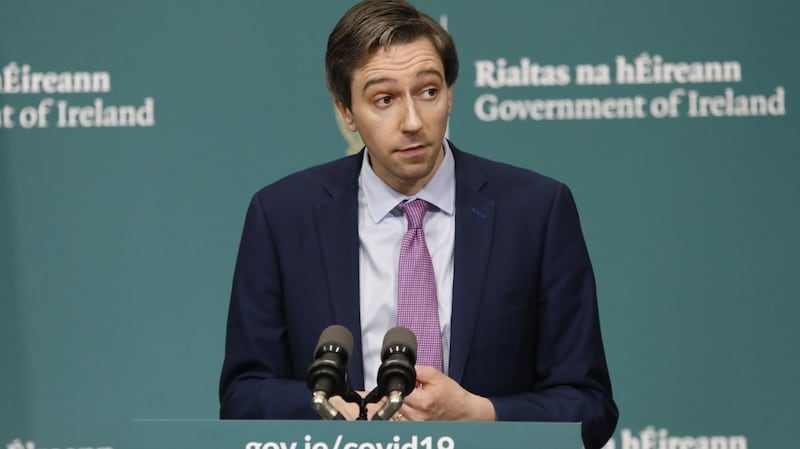In the management of a crisis, two things matter: people and systems. Almost everyone would agree that in Ireland the people part has been terrific. Ministers, civil servants and public health scientists are working day and night to save as many lives as possible.
Nothing in what follows here is intended to question the integrity and dedication of any of these people. But individual effort and expertise have to be channelled into robust and rational systems if they are to be fully effective. That is not happening.
Within the nexus of experts engaged in the management of the coronavirus crisis, there are increasing concerns about the systems part of the operation. The nub of the problem is easily stated: the Government has a very well thought through system for managing emergencies – but it is more or less completely ignoring it.

And this is not abstract. There are reasons why the Government missed the huge part of the crisis that was unfolding in nursing homes and residential institutions. One of them is the tunnel vision that results from a top-down, command-and-control approach that is utterly at odds with what is supposed to be State policy.
On July 26th 2017, the Government adopted a 60-page document called Strategic Emergency Management: National Structures and Framework. It is a very serious piece of work that answers two big questions – what is international best practice for managing emergencies and how can that be applied to Irish conditions?
If you want to find in official discourse some foresight about where we are now, this is where it is located.
“In an increasingly ‘globalised’ society and interconnected world,” it says, “an emergency in Ireland may have its genesis in natural or man-made events at home or elsewhere.”
The emergencies it envisages specifically include “the potential widespread impact of a pandemic”. So the system laid out in this document and adopted as State policy by Leo Varadkar’s Cabinet is the system intended for use in precisely the circumstances we are now in.
It is, moreover, a system that has been tried and tested in the management of the climate-related emergencies – the storms and floods – of the last few years. Thus, when Covid-19 started to spread, the Government had in place a structure that had been shown to be highly effective. The mystery is this: that structure was completely ditched.
The nub of the system that was supposed to be switched on is the need to get all the moving parts working precisely together like a machine: “Effective co-ordination is required between, and within, organisations operating at the local, regional and national level.” A lead government department (LGD) is designated [in the case of a pandemic that was to be, naturally, the Department of Health], but it is [crucially] “responsible for the coordination of the ‘whole of Government’ approach”. Every relevant department and agency is to be actively engaged.
Key principle
The lead department, in this structure, is then supposed to convene the National Emergency Co-ordination Group (NECG). So, in this case, Simon Harris should have called together the NECG – the document explicitly instructs that the lead department "should not hesitate in convening a NECG in the case of an ongoing or threatened emergency of national gravity".
It is also worth noting that “A record will be kept by the LGD of the main decisions made at a NECG” meeting and that a key principle of the whole operation is to “maintain an open and transparent approach to keeping the public informed of what is being done to protect them and how they can help themselves and others”.
But none of this happened. This whole mechanism was in place to ensure co-ordination, transparency, clear internal communication and sharply defined responsibilities (and thus accountability).
When the coronavirus crisis hit, it was shoved in a drawer. Simon Harris did not take lead responsibility and did not convene the NECG. Power was instead taken over by the Taoiseach's department. Decision-making was concentrated in a very tight group at the top and information was fed into it primarily by a single body of experts, the National Public Health Emergency Team (NPHET). This body is made up of excellent people who are working selflessly and diligently. But its operation is not at all transparent and it exists entirely outside the Strategic Emergency Management structures.
This baffling decision to tear up the agreed system for managing a national emergency has three bad effects.
It deliberately evades the mechanisms for co-ordination, transparency and ministerial accountability so carefully established in 2017. It creates a bottleneck in decision-making – everything has to feed into and out of a very small group in the Taoiseach’s department, which can become overwhelmed by the scale of the crisis. And it creates tunnel vision.
Most obviously, NPHET lacked voices from the nursing home sector. The information feeding into this closed system largely excluded an unfolding tragedy. The command-and-control operation leaves little room for elements that are crucial to good decision-making: dissent and contradiction.
These concerns are not meant to erode trust in Government in the middle of a terrible national emergency. On the contrary, the maintenance of trust requires an honest answer to an honest question: why has the Government not followed its own plan?










